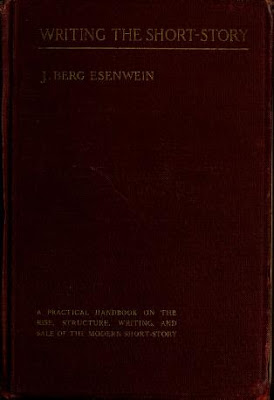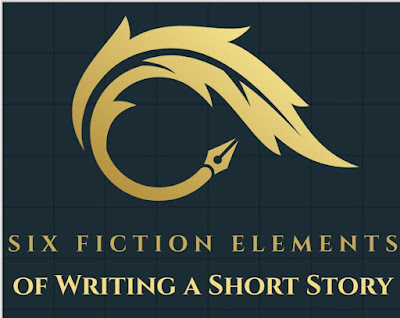The Power of the Brief Escape
By Olivia Salter
In an age buzzing with constant pings, endless feeds, and an infinite sea of scrolling, the short story finds its place as a hidden treasure—a brief but meaningful escape that beckons us away from the noise. When people today reach for a book, they often feel pressured by time, as if the world might move on without them if they’re not watching. This is where short stories serve as a gentle compromise. They invite readers to dive into a full, satisfying narrative without the long commitment, letting them pause, reflect, and recharge in the midst of busy lives.
A short story demands focus for only a short while. In return, it offers an experience that can be powerful enough to linger long after the last word. Even with so many digital distractions competing for attention, a well-crafted story captures readers with just a few pages. It lets them live a different life, explore new emotions, and engage deeply with the characters. It offers a tiny slice of introspection—something that can be hard to come by when the world is a constant flood of information. Short stories remind us of the beauty in small moments and teach us that meaningful reflection doesn’t always need hours but only an open mind and a willing heart.
Through these compact narratives, readers can meet unique voices and explore themes like love, loss, humor, and wonder without feeling overwhelmed. And unlike the passive consumption of content that devices encourage, a short story requires engagement. It lets readers pause in the face of today’s relentless pace and find something personal in its words. When they finish, they feel a sense of accomplishment, something achievable within a moment stolen from their day.
In a way, short stories are the antidote to the distractions that threaten our focus. They give us a space for depth, reflection, and the rich layers of life—all in a time when we need it most but seem to have the least time for it.
The beauty of a short story is that it doesn’t just offer an escape but gives us a distilled experience. With only a few pages or paragraphs, every sentence has a purpose, every word counts. There’s no room for unnecessary detail or drawn-out descriptions. Instead, we get an intense burst of story and emotion that feels like a spark igniting the imagination. Unlike novels, which can take days or weeks to finish, a short story can be read in a single sitting—perfect for a lunch break, a bus ride, or even just a quiet moment before bed.
This structure, stripped down to its essentials, fits our time-crunched lives but also challenges our minds. We’re asked to interpret, to feel, to understand quickly, almost intuitively. With so much packed into so little, short stories encourage close reading and reflection, calling us back to savor a detail or ponder an ending, perhaps even to read the story again. They remind us that good storytelling doesn’t always need length; it only needs impact.
Moreover, short stories offer a unique blend of accessibility and diversity. Because they’re brief, they’re more likely to take risks, explore diverse perspectives, or touch on unconventional themes. New voices often start with short stories, breaking in with tales that challenge mainstream narratives and share unheard experiences. A reader can step into a hundred lives, cultures, or perspectives within the span of a single afternoon, gaining insight into worlds far different from their own.
This diversity is especially powerful today when people crave connection and understanding in a world that can feel divided. Short stories allow us to see life through the eyes of characters who might face completely different struggles yet feel familiar. They remind us of our shared humanity in ways that are refreshing and eye-opening, often with a nuance that is lost in the rapid scroll of social media.
In a time when technology constantly draws us in, short stories offer a chance to break away from the blur of quick content. Instead of the passivity that comes with endless scrolling, a short story invites active engagement. It demands that we pause, reflect, and think. It’s not about quick consumption but a brief immersion into something meaningful, something that connects to a part of us that technology often overlooks.
Short stories also resonate in times of uncertainty. With so many feeling overwhelmed or anxious in today’s world, these stories can be a source of solace and inspiration. They give us small doses of hope, sometimes even catharsis. A person going through a hard time might find comfort in a character who survives loss, or gain courage from one who faces their fears. These stories provide a small but powerful reminder that our own struggles can be shared and understood.
In this way, short stories are far more than entertainment; they’re a form of connection and introspection, a reminder that even in the shortest spans of time, we can still find stories that are deeply human. And in an era of endless information, they offer a pause that enriches rather than exhausts us, making every page a worthwhile journey.
Short stories also carry a distinct sense of immediacy and urgency. With only a few pages to build a world, develop characters, and drive a plot, there’s no time to waste, and that intensity pulls readers in. Each story begins like a snapshot mid-action, immersing us immediately in the heart of things. This effect is rare in long-form narratives, which often take time to set up. But a short story starts at full speed, offering readers that instant, deep engagement—a perfect fit for our fast-paced world.
There’s also something magical about the way short stories leave room for mystery. They don’t always tie up loose ends neatly; often, they end with ambiguity, an open question, or a single, haunting image. In our world of constant explanations and endless information, this mystery can feel freeing. It invites readers to ponder, to make sense of what they’ve read in their own way. That ambiguity lives on in the reader’s mind long after the story ends, sparking conversations and interpretations that linger in a way a simple plot summary could never achieve. This sense of open-endedness allows readers to interact with the story, making each reading experience personal.
Short stories encourage us to find meaning in life’s smaller moments, to recognize that sometimes the greatest insights come not from grand narratives but from brief encounters, fleeting thoughts, or quiet realizations. A short story can take a small, everyday moment—a shared glance, a memory, a fragment of conversation—and show us the depth and beauty within it. This can be incredibly grounding in a time when we’re overwhelmed with the noise of big events and major news.
They’re also ideal companions to our digital devices. The same tools that can distract us from reading can also deliver short stories directly to us in just seconds. Many readers discover short stories online or through apps, treating themselves to a daily dose of fiction on the go. Some platforms specialize in bite-sized stories, offering 500-word tales or even flash fiction that can be finished before a subway ride ends or a coffee break wraps up. Short stories blend perfectly into modern life, becoming accessible oases of thought in a busy day.
And perhaps one of the most enduring reasons short stories matter today is that they serve as an entryway to the world of literature for many. A short story can spark a lifelong love of reading, offering people a sense of discovery without the commitment of a long novel. This is especially true for younger readers or those just returning to reading after a long time away. A powerful short story can remind them why storytelling matters, why it’s worth making space for in a busy life, and how something as simple as a few pages can bring so much joy, wisdom, or comfort.
In the end, short stories teach us that even in brief encounters, there’s potential for immense impact. In a world that’s often too hurried to slow down, they give us permission to stop, to savor, and to remember that, sometimes, the smallest moments contain the most profound truths. So, while we continue to live in an era of short attention spans, the short story is there, quietly fulfilling its purpose: giving us a glimpse into other lives, a moment of stillness, and a reminder of the magic hidden in brevity.








